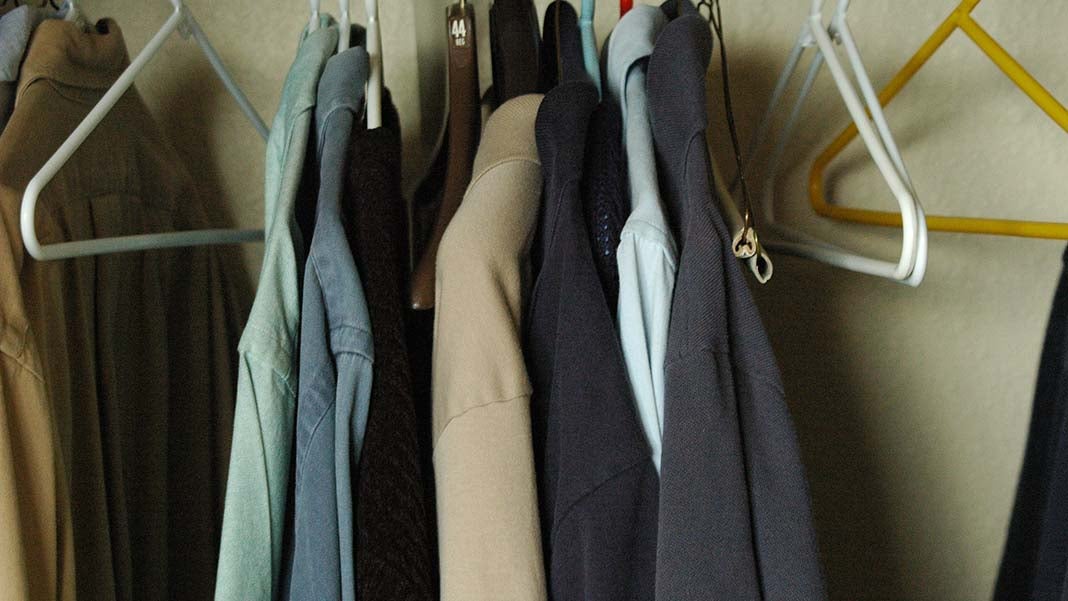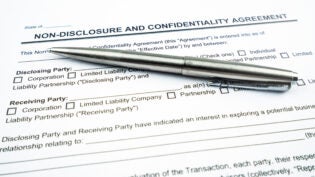5 Unspoken Rules of Successful Casual Business Style
By: Anthony Horner

Long gone are the days of uniform black suits and shiny leather briefcases. Today, it’s all about ‘business casual,’ a dangerously ambiguous and easy-to-get-wrong dress code. Some companies have written guidelines for employee attire, but without any concrete parameters the corporate version of ‘smart casual’ can be bewildering. Dressing well for business has never been a more difficult task, especially when aiming for a casual business style.
Fashion may not be your top priority when it comes to your working life. We know what you’re thinking: ‘Fashion is secondary to staying on top of targets and putting in the daily grind.’ Yet, recent research shows that the clothes we wear can have a significant impact on both those around us and ourselves. Not only are we scientifically more likely to trust someone who dresses the part, but we too are more likely to believe in our own abilities and skills when we wear the right clothes. Whether you’re looking to impress your boss, dazzle your clients or boost your confidence—choosing the right work attire is key.
Dress for success is far from an empty slogan, so don’t fall foul to fashion and slip down the corporate ladder. In this post, we’ll show you the unspoken rules of dressing to impress with ‘business casual.’
What is Casual Business Style?
The term ‘business casual’ first emerged in Silicon Valley in the 1980s. It was inspired by the boom of start-ups in the tech industry and the move away from traditional business attire. These small, self-contained, tech start-ups endorsed a culture of inclusivity and openness. They were less interested in the flashy side of corporate life and instead deeply invested in innovation, development and transparency. Mark Zuckerberg has since become the poster-boy of this new vision for the workplace. Wearing the same jeans, t-shirt, hoodies and sliders to the office, the multi-billionaire has changed our perception of how business should be done.
Today, a casual business style extends far beyond the tech industry. In 2017 in England, members of Parliament at the House of Commons were instructed to wear ‘business-like attire,’ and the G8 summit leaders were told to come in ‘smart casual.’ The financial sector also jumped on the bandwagon, with JP Morgan recently introducing ‘business casual’ as the new official dress code for all. But what does it mean?
No ties? No suits? Heaven forbid: flip-flops in the office?
Business casual is a more relaxed take on office attire. Ties and briefcases are out and creativity and personality are in. Here are our top rules for getting the look right.
1. The Suit Rule
You can’t go wrong with a suit. Whether ‘business formal’ or casual business style, a versatile, well-made suit will keep you a cut above the crowd. There are only two rules to follow when choosing your suit; the fabric and the fit.
The Fabric — Office suits have long been a ghastly affair. Shiny and thin fabrics often make you look like a door-to-door salesman, rather than a savvy professional. To get the perfect ‘business casual’ look, opt for tweed. Tweed has a long sartorial history in office wear. In the 19th century, ‘casual Friday’ was implemented for the many gents who donned their tweeds to work, before catching the train to their country estates in time for the weekend. Universally loved for its durability and elegance, a tweed suit offers a more relaxed, suited look.
The Cut — However stylish the design or high-quality the fabric, baggy, poor-fitting suits will never look good. Invest in a well-tailored suit. There are hundreds of online tailoring services that offer cost-effective and hand-made suits that can be delivered directly to your door. Two or three of these custom-made suits are all you need to build up your office look and are well worth the investment.
2.The Jacket Rule
Adding a jacket to a more casual outfit is an easy way to elevate your look. A smartly-tailored jacket layered over a jumper and jeans gives you a smart and sharp edge. But not all jackets are made equal when it comes to work wear. Pairing a stuffy double-breasted, gold-button emblazoned blazer with chinos and an open shirt will make you look out-of-touch and out-of-date. Instead, opt for a more relaxed, unstructured jacket. Steer clear of shoulder pads and large lapels and stick to minimalism slim-fit designs and shapes. Your jacket should sit square and snug and shouldn’t peak at the shoulders, as this overly-structured look gives off a more formal vibe. For a contemporary look, shorter jackets that end just above your cuff line and just below your hips are the best bet.
A well-made cardigan in merino-wool or cashmere works as a great alternative to a jacket or blazer and delivers a more ‘off-duty’ look. Stay away from chunky ribbing, folky patterns and outdoorsmen-style toggles. You’re at work, not enjoying a weekend in the Alps.
3. The Shirt Rule
Shirts are often underestimated. Seen as a necessary item to hide a bare chest and provide a backdrop to the jacket and trousers, we’re all guilty of going for the same old shirts every time. But shirts can transform your look and push you towards unwelcome formality or elegant informality in one fail swoop. Don’t get stuck in a rut with your shirts—it’s not all stiff collars and sparkling whites. Switching up your shirt color is always a winner. Pastel blues, pinks, greens and purples insert a subtle dash of color that keeps you looking both cool and smart.
Mixing up fabrics and cuts are also an easy way of dressing down your business look. Keep away from shiny poplin fabrics and, instead, go for Oxford cloth or chambray to give a casual twist to a more formal look. For an effortlessly casual business style, ditch the standard white button-down for Mandarin and collarless shirts. Not only are these shirt styles incredibly trendy right now, but they’re also easy to wear without a tie.
Polo shirts are a great alternative for times when you need to look more casual. Paired with tailored trousers and jacket, the humble polo hits the sartorial sweet spot between business formal and casual dress codes.
4. The Trouser Rule
When it comes to trousers, the rules are clear on what you shouldn’t wear. Distressed denim, leather, three-quarter length trousers, and thin-shiny materials are out. No ripped knees or funky patterns, either. Keep your trousers simple and classic. If you’re going for jeans, choose a pair in dark denim; both dark blue and black work well. Keep the fit slim, but not skinny and wear with a well-made belt.
If you’re going for chinos, keep the colors muted and opt for front flaps and roll-ups for a more casual look, and pleats and creases for a smarter look.
5. The Balance Rule
Getting your ‘business casual’ look right is a delicate balancing act. Tip too far on the casual side and your clients and colleagues won’t take you seriously. But, dress too formally and you end up looking old-fashioned and out-of-touch. As such, the final rule for dressing for the office is to consider harmony. Every item must be balanced with the others of the ensemble. If you’re wearing a polo shirt and loafers, adding tailored trousers will keep you looking professional. Or, if you’re wearing a blazer, shirt and brogues, you may want to tone it down with chinos.
One of the easiest ways in which to subtly manipulate the delicate act of balancing your look is through the use of various types of accessories.
If you are looking to dress yourself up without seeming too overdressed, then you can simply add high-quality jewelry items such as rings, bracelets, cufflinks, or necklaces. Each item will bring about a certain level of elegance and professionalism without overpowering your whole look. The great thing about jewelry is that there are so many varieties to choose from, and then even more choices when it comes to the type of material used and the style.
You can decide on gold, silver, platinum, and stone, along with a whole host of other materials that are now being used to create beautiful accessory items. Of course, if you are looking to really wow onlookers then you will want to invest in some diamond accessories at some point. There are plenty of places to purchase wholesale diamonds if you are looking for a good deal, and to increase the versatility in your accessory collection.
When it comes to the casual look, accessories such as shoes, glasses, scarves, and even hats will be your best friend. There are many high-quality, and versatile variations of each item that you can purchase, and use to help balance your look when it comes to appearing more casual.
With all this being said, there are many other types of accessories that you can use to help balance your look, as well as focusing on the outfit itself.
‘Business casual’ may appear to be vague and ambiguous, but follow our steps and you’ll never look out of place.
3021 Views











